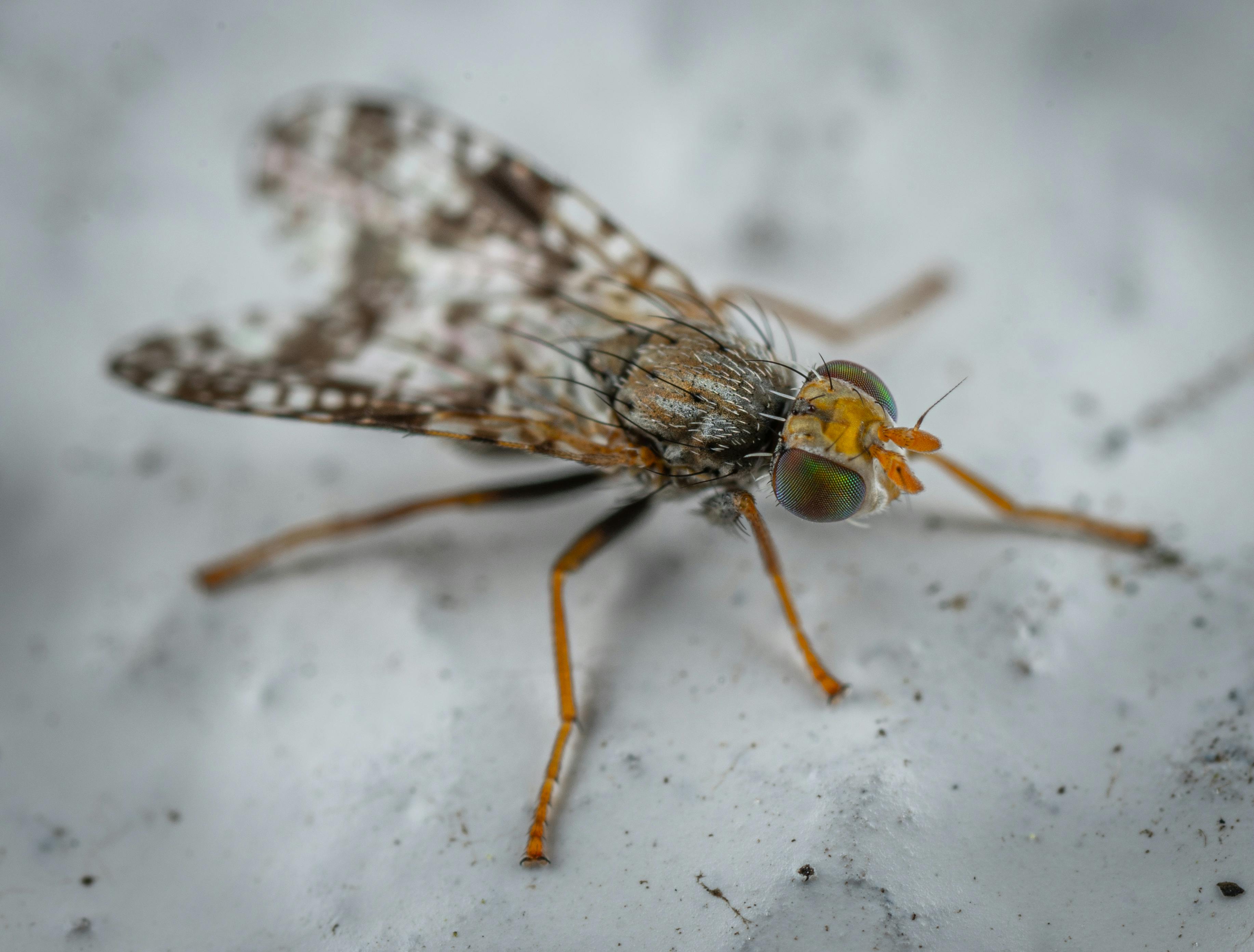Are gnats and fruit flies the same thing? That is a common question that many people have when it comes to these two small insects. In fact, while they may look similar and have some features in common, there are some key differences between gnats and fruit flies. In this article, we will explore the characteristics of gnats and fruit flies, as well as how to tell them apart.Gnats are small, winged insects belonging to the order Diptera and the family Culicidae, which includes midges and mosquitoes. They typically measure 1-5 mm in length and are characterized by their long, thin bodies. Gnats feed primarily on plant nectar, although some species are blood-suckers. Gnats can be found in both outdoor and indoor environments, but they are most common in moist areas with plenty of vegetation.
What Are Fruit Flies?
Fruit flies are small insects that belong to the Drosophilidae family. They are known for having a short lifespan and their attraction to ripe and fermenting fruits and vegetables. These tiny flies are also known as vinegar flies because of their interest in the vinegar produced by fermenting fruits and vegetables. Fruit flies can lay hundreds of eggs at a time and reproduce quickly, making them difficult to get rid of.
Fruit flies feed on sugary substances, such as honeydew, overripe fruits, vegetable matter, nectar, and plant sap. They will also feed on the yeast found on fermenting fruits and vegetables which is why they are often found in kitchens or other areas where food is stored or prepared.
Fruit flies lay their eggs near sources of food such as decaying organic matter or overripe fruit so that when the larvae hatch they will have something to feed on. The larvae then feed off the decaying matter until they reach adulthood. As adults, fruit flies live for up to two weeks depending on environmental conditions such as temperature and humidity.
Fruit flies can be identified by their red eyes and yellowish-brown bodies with black stripes running lengthwise along their abdomen. They usually measure between 2-4 millimeters in size which makes them hard to spot unless you know what you’re looking for.
Although fruit flies may seem harmless, they can be a nuisance if left unchecked as they can quickly multiply and contaminate food sources with bacteria from their feet and wings. To prevent an infestation, it is important to keep kitchen surfaces clean, seal off any potential entry points around windows or doors, and dispose of overripe fruits or vegetables right away.
Are Gnats and Fruit Flies the Same?
The answer to this question is complicated and depends on what type of insects you are referring to. Gnats and fruit flies are both types of small, flying insects, but they belong to different families. Gnats belong to the family Culicidae while fruit flies belong to the family Drosophilidae.
Although these two insect families may look similar, there are several key differences between them. Gnats tend to be smaller than fruit flies, with most species measuring only 1-4 mm in length. They also have long legs and slender bodies compared to fruit flies, which have short legs and more rounded bodies. In terms of coloration, gnats typically have dark gray or black bodies with white or yellow stripes while fruit flies tend to be brownish or yellowish in color.
Gnats breed in a variety of habitats including moist soil, decaying vegetation, and standing water. They feed primarily on plant nectar and other liquids such as sap or honeydew secreted by aphids. Fruit flies, on the other hand, prefer warm temperatures and will breed in fruits or vegetables that are overripe or starting to decompose. They feed on the liquid found inside fruits or vegetables as well as decaying matter found around their breeding sites.
In conclusion, while both gnats and fruit flies are small flying insects that can be a nuisance indoors, they belong to different families with distinct physical characteristics and breeding habits. If you’re having trouble identifying which type of insect you’re dealing with, it’s important to take a closer look at its size, coloration, and behavior before attempting any kind of pest control measures.
Identification of Gnats
Gnats are small flying insects, and there are many species of gnats found throughout the world. Identification is important for controlling the population of these pests. Gnats can be identified by their size, color, and behavior. Most gnats are less than 2mm in length and have thin, elongated bodies. The colors range from light yellow to dark brown or black. Some species may have stripes or spots on their wings or bodies. Gnat behavior varies depending on the species, but most feed on plants and other organic matter. Gnats can also be found near stagnant water sources or areas where there is a lot of moisture.
Identifying the type of gnat is important for effective control methods. Different species may require different treatments, so it is important to know the exact type of gnat before attempting to control them. Insecticides may be necessary to reduce large populations, but they should only be used after proper identification has been made. Biological control methods such as introducing natural predators can also be used in some cases. Proper identification is essential for choosing an effective control method for any type of pest population.
Identification of Fruit Flies
Fruit flies, also known as vinegar flies, are one of the most common pests in homes and gardens. They are small, flying insects that feed on fruits and vegetables. Identifying fruit flies is important for controlling these pests. Knowing how to identify them can help you determine the best way to get rid of them.
Fruit flies are typically black or brown in color and have a patterned abdomen. They are about 1/8 inch long and have red eyes. The wings are usually transparent or translucent, with dark veins running through them. They also have a pair of long antennae on their heads, which they use to smell their food sources.
Fruit flies lay their eggs in decaying fruits and vegetables, as well as other moist organic matter such as compost piles or garbage cans. The larvae hatch from the eggs and feed on the decaying material until they reach adulthood, at which point they will begin to look for food sources again.
It is important to keep an eye out for fruit fly activity in your home or garden so that you can take steps to get rid of them quickly before they become a bigger problem. If you see a large number of fruit flies flying around your kitchen or garden, it may be time to take action to get rid of them before they become an infestation.

Appearance of Gnats
Gnats are small insects that can be found in many different environments. They can appear in large numbers, making them a nuisance for homeowners and gardeners alike. Gnats are often mistaken for mosquitos due to their similar size and coloration, but they do have some distinct differences. Gnats tend to be more slender and have longer legs than mosquitos. They also have two wings instead of four, and their wings are usually clear or transparent. Gnats typically range in size from 1/16th of an inch to 1/8th of an inch in length. Their bodies may be black, brown, or gray in color, but they tend to be dark-colored overall.
Gnats can also be identified by their behavior. They are attracted to standing water and decaying organic matter such as fruits, vegetables, and anything else that has been left outdoors for too long. They feed on these materials as well as the nectar found on flowers and other plants. Gnats are often seen hovering around porch lights at night or flying around windows during the day. They may even land on people when they enter a room or outdoor space with a large population of gnats present.
Appearance of Fruit Flies
Fruit flies are small insects that measure between 1/8 and 1/4 inches in length. They have red eyes, yellowish-brown bodies, and black stripes on their abdomen. They also have long wings with distinctive dark bands. Fruit flies are attracted to the sweet smells of ripening fruit, as well as decaying matter.
Fruit fly larvae are white in color with a light brown head and measure around one millimeter in length. The larvae feed on fruit and other organic material before pupating into adults. The pupae are yellowish-brown in color and can be found attached to the walls or floor of the fruit fly breeding area.
Adult fruit flies are agile fliers and can quickly zip from place to place looking for food sources. They often congregate near windows or other areas where light is present as they look for food sources such as ripe or fermenting fruits, vegetables, beer, soda, syrup, honey, etc. If there is an infestation of fruit flies in your home or business, then you may notice them swarming around lights or flying erratically when disturbed.
Behavior of Gnats
Gnats are small flying insects that live in a variety of habitats, including woodlands, wetlands, and gardens. They are often found near sources of water, such as ponds and streams. Though they may be annoying to humans, gnats play an important role in the environment. They feed on other insects and pollinate plants. Understanding the behavior of gnats can help you to manage their presence in your home or garden.
Gnats typically fly in a zigzag pattern and rest on plants and other surfaces when they are not actively feeding or mating. This behavior is known as “flitting” and is most commonly seen during the day when gnats are active. At night, they become less active and often rest on vegetation or nearby structures.
Gnats use several different methods to find food. Some species rely on their vision to locate food sources while others use chemical signals to detect potential prey. They may also use their sense of smell to locate food sources such as decaying organic matter or other insects that they can feed on. Gnats also feed on pollen, nectar, and other plant matter, making them important pollinators for many plants.
Mating behaviors vary from species to species but generally involve males pursuing females through flight or hovering around them until they mate. Some species form swarms during mating season that can be seen from a distance. After mating, females lay their eggs on suitable surfaces such as leaves or stems where larvae can hatch and feed.
Gnats are relatively harmless creatures but can become bothersome if their populations get out of control. To reduce the number of gnats in your area try using traps or insecticides designed specifically for them. You can also reduce standing water around your home and keep vegetation trimmed back so there is less food available for them to feed upon.
By understanding the behavior of gnats you can better manage their presence in your garden or home environment while still allowing them to play their important role in the ecosystem.

Conclusion
Gnats and fruit flies are two different types of insects, although they share many similarities. Gnats are tiny, mosquito-like creatures that live in moist areas and feed on decaying organic matter. Fruit flies are larger than gnats and have distinctive red eyes. They lay their eggs inside fruits and vegetables, causing them to rot quickly. Both gnats and fruit flies can be a nuisance in the home, but they can be controlled with proper sanitation and pest control measures.
In summary, gnats and fruit flies may look similar, but they are distinct species with different habits. While there are some similarities between the two, it is important to understand the differences so that you can identify each one correctly and apply the appropriate control measures.


